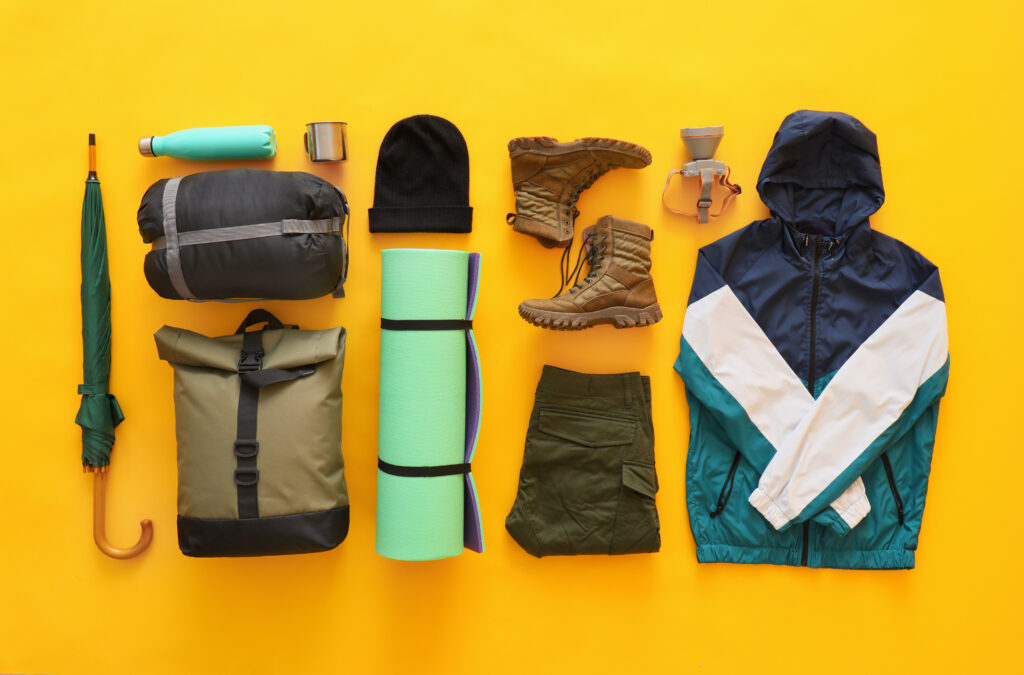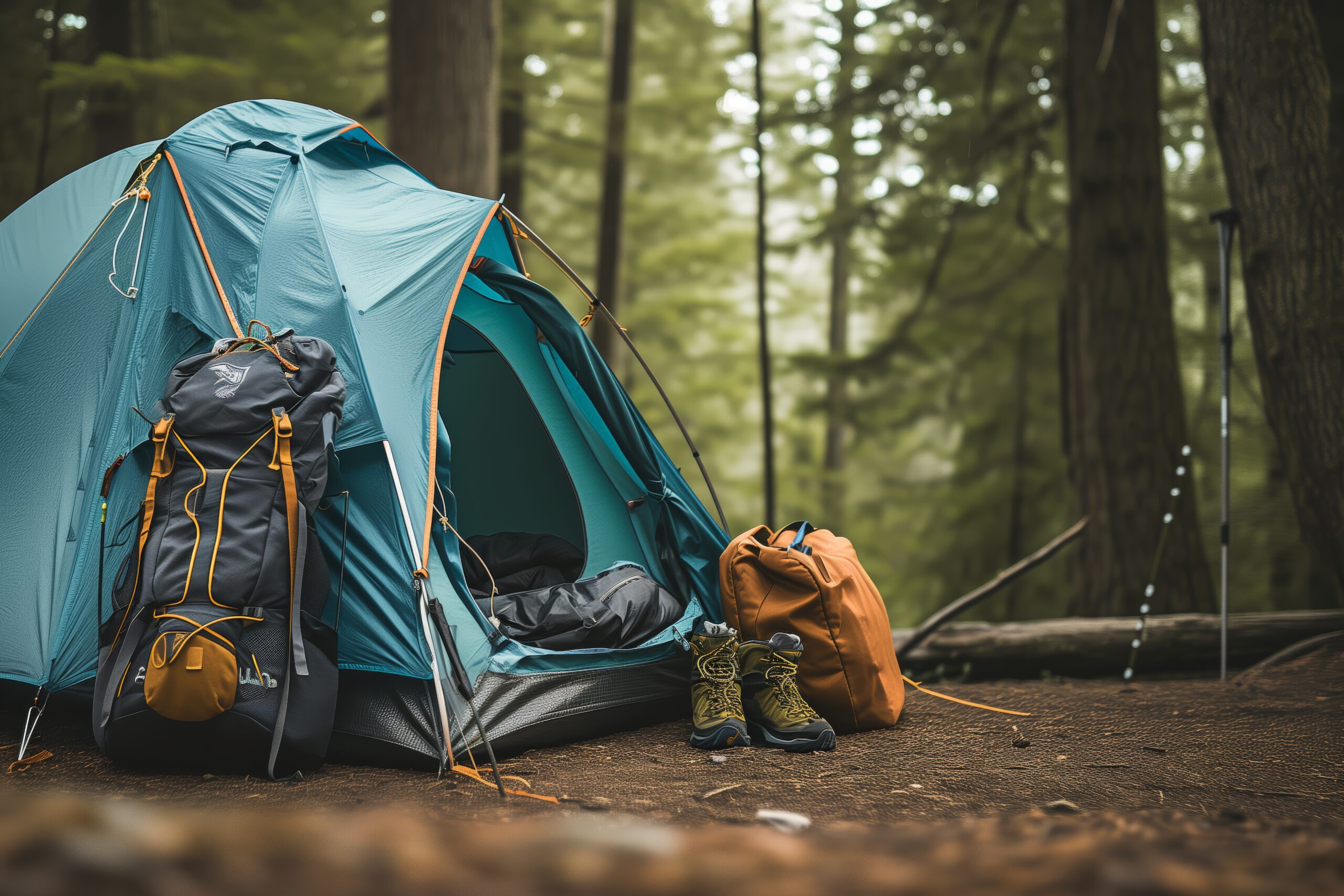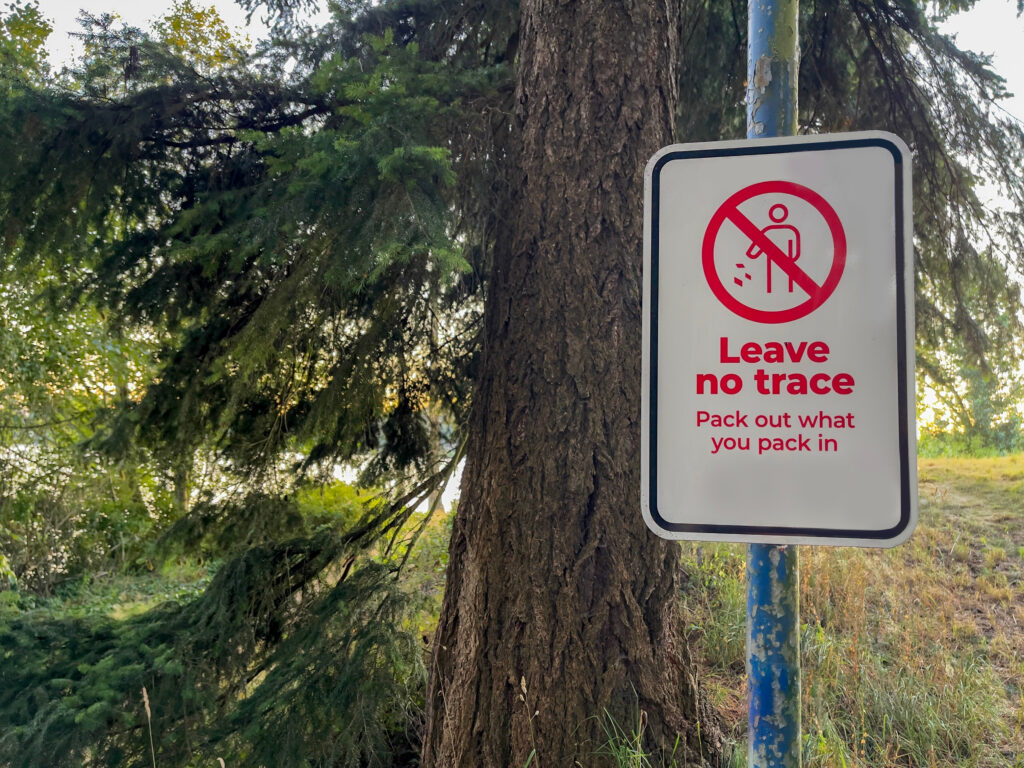The idea of sustainable camping is something that may be new to many people. Growing up camping, I never thought of what it meant to camp sustainably. While there may be many levels and layers to what sustainable camping truly is, I think it can be different for each person. You do not have to fully change the way you go camping or connect and enjoy nature, but slightly altering just a few things or even being more conscious of the environment and how the products you use affect it can be a great start to diving into the practices of sustainable camping.
Read these tips on how you can make a transition over into more sustainable camping practices, while really still just camping like normal.
9 Tips for Sustainable camping… or just camping.
Sustainable practices are something that many people don’t think of. The whole idea of being more eco-friendly can be daunting as a whole and this deters many people from switching simple things in their daily life. Being eco-conscious is something that doesn’t have to be scary or feel like you have to make huge lifestyle changes. There are many simple things you can change that will have little to no impact on your own personal routines, but can contribute to a much greater cause, especially when doing something like camping.
Camping is a great way for many people to escape to nature, relax, and do something that seems like a relatively harmless activity. However, if you are not conscious of yourself, you could be having a negative impact on the environment without really even realizing it. Here are some simple ways to limit your contribution to negative climate impact.
1. Choose Eco-Friendly Gear

Camping gear is something that everyone who goes camping has and needs. It’s probably the most essential part of the camping experience, making sure you are equipped to hit the great outdoors. While this can range from general things like tents, sleeping bags, and dishes, all the way up to campers, we are going to focus on the more general smaller equipment, not full-blown campers and RV’s.
Camping gear like tents, sleeping bags, and other fabric-based products are often times made from synthetic fibers. With these being mass-produced, there is a great risk of harmful emissions and materials being put into the environment. Investing in a tent or sleeping bag made from recycled products can be a great way to reduce your negative impact without changing anything about how you would normally camp. Here are some sustainably made tents for your consideration.
Renting camp equipment is also a great route to take when planning your next trip. Say you aren’t an avid camper but still like to go every once in a while. Rather than spending a bunch of money on all new equipment, renting things like a tent is a great way to help reduce environmental impact, while still getting a great experience. Plus, who doesn’t love not having to store everything you might only use once a year? REI has a convenient rental location finder to help make this easy.
2. Set-Up Smart

Where you choose to set up your campsite makes a huge difference not only for your own personal experience but also for how it affects the environment. It is always important not to disturb any natural ecosystems around you. In my personal experience from growing up camping, most campgrounds will have preset designated areas, dirt patches, or even paved areas for you to set up. However, this isn’t always the case.
So what to look out for? Always be sure you are not setting up camp where it looks like an animal may live, this could interfere with not only their livelihood but also yours. It is also important to find a naturally clear and open area. If you have to cut down, knock over, or move any naturally occurring things like tall grass, shrubs, or anything else, it is not a good place to set up.
It is also smart to avoid burning anything too close to these types of areas as well and to avoid setting up too close to the water where you risk contaminating it with anything you may be doing at your site. We will talk about this more in depth farther down so be on the lookout for that section. The general rule: always consider wildlife first when picking your prime campsite.
3. Be Energy Efficient
Being energy efficient when camping can mean a few things. A lot of people choose to camp at places that have electric hook-ups. While this is convenient, it’s not really super sustainable unless you know the energy for the hookups is being sourced in a renewable way like solar panels. One state park I grew up camping at did actually have a solar field that was being used to power a large majority of the park, which was cool to see and know that the energy we were using while camping was sustainably sourced. In many cases, this is an unknown though, so how can you make a difference?
- Solar Power: Rely on solar chargers, panels, and lanterns to power your devices and light your campsite.
- Hand-Crank Devices: Use hand-crank flashlights and radios to avoid battery dependency.
- LED Lighting: Choose energy-efficient LED lanterns and headlamps over traditional bulbs.
- Minimal Electronics: Limit the use of energy-draining gadgets like phones or portable speakers.
- Compact Camp Stoves: Use high-efficiency stoves that consume less fuel and cook food quickly.
- Insulated Gear: Use high-quality, insulated sleeping bags and clothing to minimize the need for heating.
- Power Banks with Solar Panels: Use rechargeable power banks, ideally solar-powered, to avoid disposable batteries or frequent recharging from non-renewable sources.
Following these simple practices when it comes to using/conserving energy can be a great way to be more energy efficient and conscious of the impact that you are having on the environment when camping.
4. Cook Responsibly
Camp food is something I know I always looked forward to when on a camping trip. That being said, how it was being made and what was done with extras was something I never took into consideration when growing up. There are a few simple practices that can help to cook more responsibly and be conscious of your food choices while camping.
Ingredients: Use locally sourced, organic, or plant-based ingredients. While this is something that is a good practice for everyday life and not just camping, it can definitely be used to be more eco-friendly while camping.
Preparation: whether it’s over the fire or a camp stove makes a big difference. There are lots of various energy-efficient camp stoves you can find that will help to minimize impact. One great choice is by BioLite who makes camp stoves that burn organic matter like twigs and then even produce energy to use to charge your phone while cooking.
Waste: Plan accordingly to what you want to make when getting ready for your trip. Buy accurate portions to help reduce excess waste and even plan to try and preserve any leftovers to eat later! Any food that is eaten is not wasted. Always be sure to properly dispose of any packaging to ensure it doesn’t end up on the ground or in nature.
5. Choose Natural Products

Being conscious of the products you are using is another big one. Many products have harmful chemicals in them that could cause issues if spilled into the environment. This includes things ranging from body and hygiene products to soaps used for dishes. Be sure that you are reading the labels and using safe products. What to look out for?
- Biodegradable Ingredients: When shopping for soaps, sunscreens, bug sprays, and hygiene products look for plant-based and biodegradable options. These products break down naturally and don’t harm waterways. Avoid harmful chemicals like sulfates, parabens, and artificial fragrances.
- Minimal and Eco-Friendly Packaging: Look for products that have a small amount of extra packaging, packaging that is recyclable, and even made from previously recycled materials.
- Multi-Functionality: Find all-in-one products! Some brands make safe and eco-friendly soaps that are safe to use on the body, hair, and even dishes all in one. Dr. Bronners is a great example of this type of all-in-one product.
- Certifications: Look for labels like “USDA Organic,” “Cruelty-Free,” “Fair Trade,” or “ECOCERT” to ensure ethical and environmentally friendly practices.
Looking out for these easy things when shopping for your products is a great way to not only practice sustainable camping but also just sustainable living.
6. Choose Reusable, Not Disposable

This one is pretty easy, always opt for reusable products, equipment, dishes, really anything over disposable. Use reusable containers for food, ditch plastic water bottles, and go with the nice reusable aluminum one, overall just always go with reusable ones. Single-use plastics are one of the biggest issues when it comes to waste and is a leading contributor to pollution. These single-use plastics can take upwards of 200+ years to break down. Other materials like styrofoam never break down and will forever sit in our environment. Plus, who doesn’t like drinking out of a nice metal bottle that helps keep your water cold and doesn’t have that plastic taste?
7. Be Water Wise
Water safety is always something to be mindful of if trying to practice sustainable camping. What does this mean? It’s pretty simple, always just be smart when it comes to camping near a water source.
A good rule to follow is to camp at least 200 feet away from any water source that may be near you. This will help to ensure that you are not spilling any hazardous materials into the water and preserve wildlife. Plus, those biodegradable soaps you opted for help to avoid this as well.
Being water-wise also means conserving the amount of water that you are using. Whether this is to clean yourself or those dishes from cooking dinner, ensure that you are limiting excess water use and truly only using what is needed.
8. Fire Conscious
Campfires are of course a must for many people when it comes to taking that camping trip, so how does being fire-conscious play a role in sustainable camping?
Be sure that you are not burning anything hazardous, this means avoiding burning anything that is not organic matter. Avoid tossing any waste like food packaging, single-use plastics, cans, or anything else into the fire.
Follow local fire safety regulations. Always check to make sure that there is no fire danger and that you are permitted to burn. This helps to avoid any risk of wildfires and causing extra harm to the surrounding environment. This can even play a role in air quality.
Only burn things that are collected responsibly. Burning natural organic matter is best, but this doesn’t mean just burning anything around you. Be sure that you are collecting fallen, dead, and dried-out wood from the ground that is decently small in size.
9. Leave No Trace

Finally, the tip that everyone has heard or seen. Whether it was on a sign in a local park, or on a commercial you saw growing up, this practice holds true to one of the most important and basic rules. Leave no trace: it’s as simple as that. I’ve touched on this more in a previous blog post as well.
Make sure you pack up and take everything that you brought with you. Scan the surrounding area to ensure that no trash or other debris is left on the ground. Make sure you leave the area exactly how it was when you got there to ensure no wildlife gets disturbed. This is a sustainable camping practice that everyone can do and is super easy!
In Conclusion
Hopefully following these simple 9 tips can help lead you down a sustainable camping path that makes you proud of the impact you are having. Ensuring you are being responsible and eco-friendly doesn’t have to seem like a challenge and it doesn’t have to mean making huge lifestyle changes. Many things that you can do to improve your sustainability practices are as simple as buying a different product or ensuring you are properly disposing of waste. They don’t have to drastically impact how you live, what you do, or hinder your experience of enjoying nature.
Ensuring I am being more environmentally responsible is something that I think I only recently became more aware of, but it is better late than never and every little bit helps to make a difference in how we impact the environment around us.
